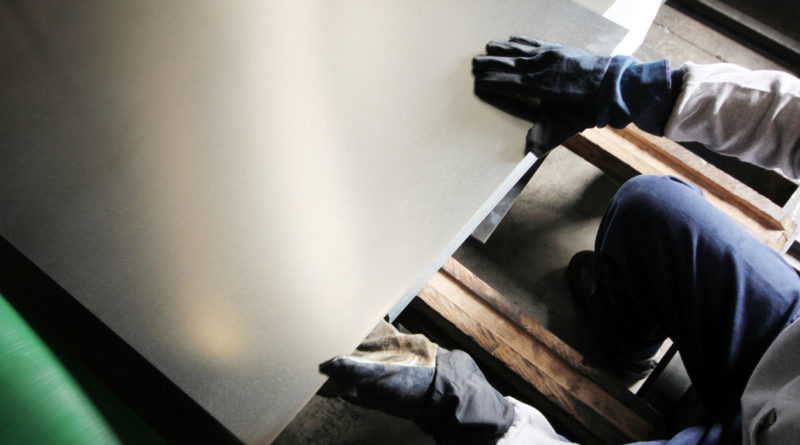What is Sheet Metal Fabrication?
Sheet metal fabrication is the process of forming objects from flat sheets of metal. Metal sheets are typically less than 6 millimeters thick, otherwise they are known as metal plates. Thin sheets of metal that are stored in rolls can be laid out flat and cut, formed, and assembled according to the CAD (computer aided design) templates.
Learn more about sheet metal fabrication and its uses in this overview of the process.
Types of Sheet Metals
Sheet metals come in a variety of different metals, including:
- Bronze. The main characteristic of bronze is that it has a low melting point. It is often used in the creation of turbines, cookware, and coins.
- Brass. Brass is lightweight, corrosion resistant, and has acoustic properties. It is often used in machine components and industrial fittings.
- Copper. The most valuable characteristic of copper is that it is an electrical conductor. It is also malleable and corrosion resistant. Copper is used for electrical wiring and plumbing.
- Steel. Known for its strength, steel is versatile and comes in many different variations. It is most often used in construction, appliances, and underground water pipes.
- Magnesium. A low density metal that is strong and rigid, magnesium works well for structural uses.
- Aluminum. Aluminum is strong like steel, but more lightweight. It works best in lower temperatures.
All of the above metals can come in sheets for the purpose of making a wide variety of objects and parts.
Types of Sheet Metal Fabrication Techniques
Sheet metal fabrication can be done in different ways and consist of any of the following techniques:
- Cutting. Sheet metal may be cut in one of two ways: with or without shears. The shear cutting process is less precise than without shears, which is done using lasers, waterjets, or plasma. How sheet metal is cut depends on what is being fabricated from the metal.
- Forming. The process of forming sheet metal does not cut the metal, but folds it into the desired shape. In the forming process no metal is left behind; the entire sheet is used to form the needed part or object.
- Assembly. The assembly process involves putting metal parts together through welding or bolting pieces of metal together with screws or other fasteners.
Benefits of Sheet Metal Fabrication
Sheet metal fabrication offers many benefits:
- Malleable. The biggest benefit of sheet metal is that it is malleable and easy to cut and form into the desired shape.
- Strength. Although sheet metal is malleable, the parts made from it are extremely strong.
- Durability. Most sheet metals are corrosion resistant and hold up well under extreme pressure.
- Lightweight. Parts made from sheet metal are lighter in weight than solid metal parts, making them ideal for certain uses, such as aerospace or automotive.
- Precision. The use of CAD (computer aided design) has led to improved precision and accuracy in sheet metal fabrication.
- Economical. Purchasing metal sheets to fabricate your own parts rather than ordering premade parts may save your business money.
- Recyclable. The parts made from sheet metal are fully recyclable. They are often made into new sheets, making them sustainable and lowering the impact on the environment.
Where To Purchase Prefabricated Metal Parts
Sheet metal fabrication requires specialized equipment and tools that are costly to purchase. Prefabricated parts made from sheet metal can be purchased directly without the need for any additional equipment.
Atlas Bronze is a leading distributor of bronze, copper, brass, iron, sintered products, self lubricated bushings, and wear plate. Call 800-478-0887 or contact us for more information or shop online.




